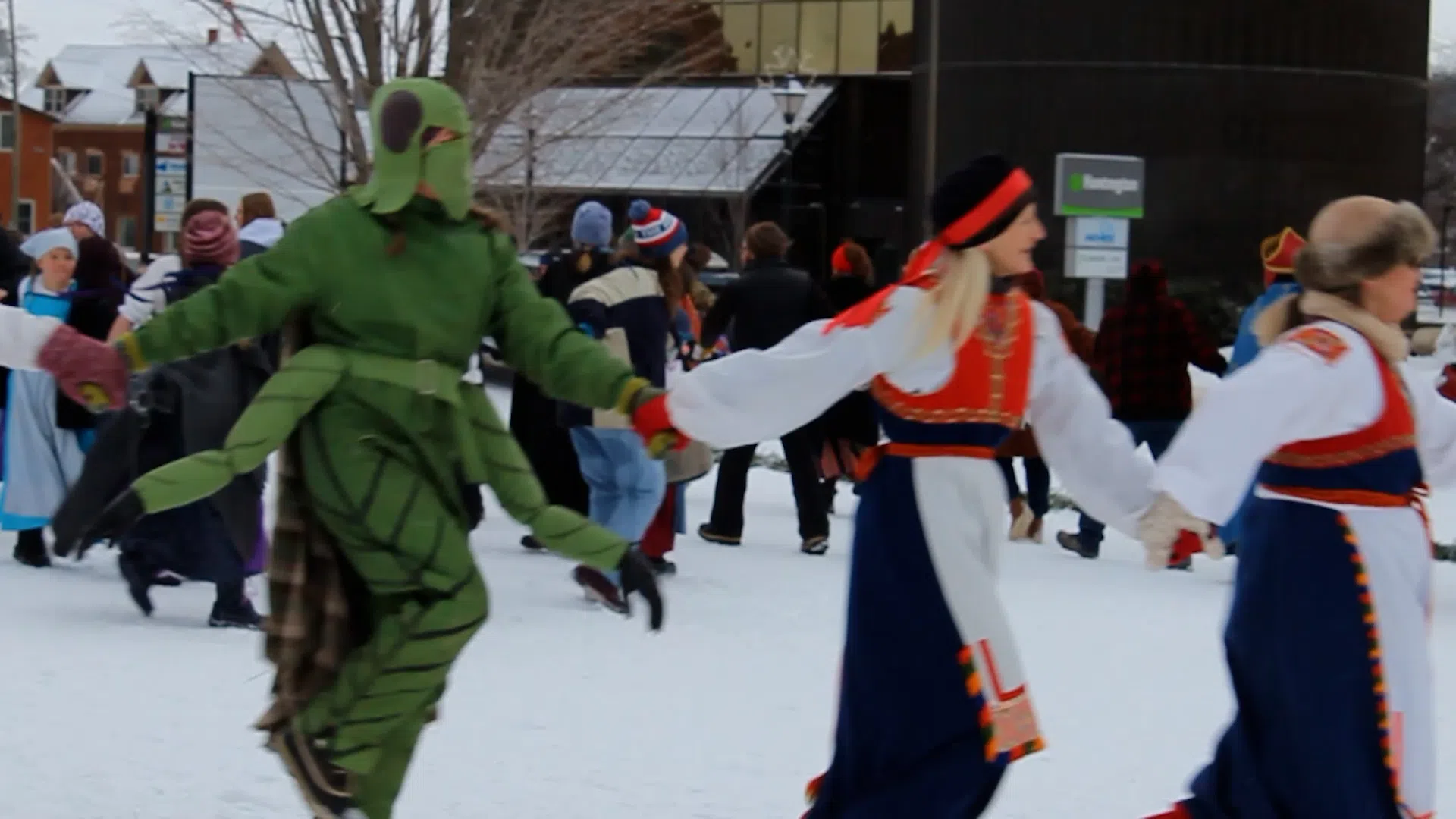Hancock’s Finnish heritage appears as street names, and flags hanging along Quincy Street, and in its people. The city started with only 20 Finnish immigrants who arrived before Finland would see its own independence.
Before 1914, the Finns had never known a self-governing Finland. Finland functioned as a subordinate of Swedish governance for centuries, and this led to Russian imperialism in the early 1800s. So Finns were essentially disenfranchised laborers in the West. There was a collapsing wooden shipbuilding and tarring industry that was taking place on the Bothnian coast. Some famines led a lot of Finns to consider leaving just broader Scandinavia and also the Duchy of Finland. – Lindsay Hiltunen, Lead Archivist, MTU Archives
Seeking a higher quality of life, many Finnish immigrants found work with the Keweenaw Peninsula’s copper mining companies. MTU Archivist Lindsay Hilitunen says that word from those early immigrants traveled quickly across the Atlantic Ocean. Encouraging more people to enter the United States.
Around 700 to a thousand Finns immigrated in that part of the mid-19th century. And then through family connections that they had back across the pond, they were writing letters, telling stories to family that there were opportunities in Michigan, Minnesota, and the upper Great Lakes region more generally. So I know that they were trying to get the family to come and also companies such as Quincy were starting to actively recruit. By the 1870s, some 3,000 Finns had immigrated, and then from 1893 to 1920, almost 300,000 arrived in the copper country. So there was exponential growth in that regard. – Lindsay Hiltunen, Lead Archivist, MTU Archives
With their skills and knowledge Finns also brought ideas and concepts to build a nesting place.
I would say that Calumet in the early 1900s was probably a big part of Finnish emergence. There was a term that they referred to as their nesting place, their Pesupäikki. So I think Calumet was sort of their first nesting place in that regard in the early 1900s. By 1880, just for instance, leading into the turn of the 20th century, Calumet Finns supported a newspaper, and several saunas. A lending library, they had a watchmaker shop, and there was a saloon that was sort of like a finished enclave. So they were building up a strong ethnic culture in Calumet that sprung up because of those coming to work in the mines. – Lindsay Hiltunen, Lead Archivist, MTU Archives
The Finnish community’s influence on the Keweenaw peninsula extended beyond businesses and laborers. Some immigrants even started Soumi College.
One remarkable influence that Finns had in the region had to do with their literacy and their education. They had many newspapers that they opened up in the region. And then of course, many people know about the educational influence with the founding of Soumi College, which was later Finlandia University that was founded in 1896 as a seminary, but then it went on to venture into broader educational opportunities. And it did flourish until 2023 when it was met with some financial and enrollment challenges. But despite the university closing, there’s still a really strong influence regarding that education. I think the Finnish American Archives as well as the Finnish American Heritage Center are doing a lot to maintain cultural performances, installations of art, and different material culture, and as important research and cultural gathering places for people, not just with Finnish heritage, people interested in that Finnish influence. – Lindsay Hiltunen, Lead Archivist, MTU Archives
Find more information about the Finnish American Heritage Center and its programs, including information for Heikinpaiva, here.







